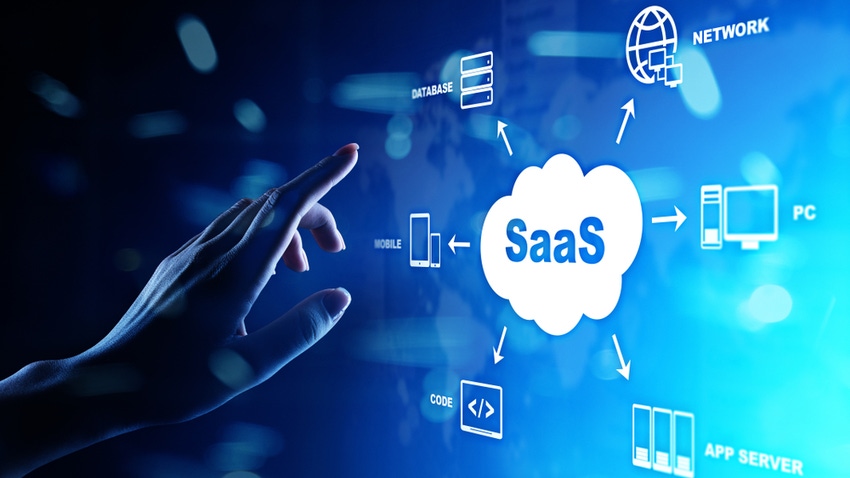Unmanaged SaaS Leads to Uncontrolled Expenses and Higher Risk
MSPs can help customers control the costs of hybrid IT.
October 16, 2020

By Derik Belair
 There’s a business adage that says, “You can’t manage what you can’t measure.” While this wisdom didn’t originate in the tech sector, it succinctly defines why some channel partners are more successful than others. One area where it comes into play is with software as a service (SaaS) and other cloud IT initiatives. This includes the ones business owners subscribe to, and the rogue cloud-based apps their employees procure on their own.
There’s a business adage that says, “You can’t manage what you can’t measure.” While this wisdom didn’t originate in the tech sector, it succinctly defines why some channel partners are more successful than others. One area where it comes into play is with software as a service (SaaS) and other cloud IT initiatives. This includes the ones business owners subscribe to, and the rogue cloud-based apps their employees procure on their own.
Even before the COVID-19 pandemic your SMB customers were already adopting cloud services. Now that more of their employees are using videoconferencing tools such as Zoom to work remotely and they’re looking to cut costs wherever possible, the demand for SaaS-based IT is skyrocketing.
Companies worldwide spent a record $34.6 billion on cloud services in Q2 2020, up roughly 11% from the previous quarter and 30% from the same period last year, according to the research firm Canalys.
Many of your customers and prospects procure cloud services directly from cloud vendors without your knowledge. And, it comes at a high cost — to you and them.
SMBs often miscalculate their software needs and spend more on SaaS applications than is needed. Frequently more licenses are bought than are required, which results in orphaned SaaS apps. A recent report by the company Blissfully found that nearly 75% of companies with 100+ employees have orphaned SaaS subscriptions in which there is no billing owner — typically because the billing owner left the company.
Customers’ SaaS Choices Hinder Productivity
Companies buy SaaS solutions in the hope of improving their productivity. Ironically, the opposite can occur. Here’s one example that illustrates why. Let’s say an SMB buys a cloud-based CRM app, which includes cloud storage. The customer also uses Microsoft 365, which comes with OneDrive cloud storage, and it also has a standalone Box subscription. Some of its employees will store data and files in OneDrive; some will use the CRM, and others will use Box. This creates a complex silo of data and files in the cloud that is nearly impossible to manage. This problem is further compounded when employees add additional personal cloud storage services to the mix. For example, Google Drive, iCloud and Amazon Cloud Drive.
Another productivity drain occurs when businesses use multiple competing software apps to perform the same tasks. Collaboration tools are an excellent example. Microsoft 365 comes with Teams. The customer’s CRM subscription may include a proprietary collaboration tool. Plus, just as with cloud storage, employees may have their personal favorites like Zoom, Skype, Google Hangouts or Webex. Not only is there the challenge that these apps don’t all play well together, but that their use also can create additional data silos, which leads to redundant work and longer search times.
SaaS-Based Security Vulnerabilities a Serious Concern
There’s also a security concern with unmanaged SaaS apps. Cloud-based apps and services circumvent traditional endpoint security solutions, which makes them more vulnerable to cyberattacks. This problem is further compounded when these unmanaged apps are installed without two-factor authentication (2FA).
SaaS-based shadow IT is another serious security problem. Cloud-based peer-to-peer apps, for instance, are often polluted with …
… malware and spyware. Besides that, they’re known for illegally sharing copyrighted movies, music, apps and games. When employees use company-issued computers to download these illegal assets, your customers also share the risk. They��’re not even aware of it.
If you’re not managing your customers’ SaaS apps, you’re inevitably reverting your MSP practice back to a break-fix business. For instance, when a cybercriminal finds one of your customer’s unsecured cloud apps and encrypts it with ransomware, the customer calls you for assistance. You try to fix the problem. The break-fix model was replaced by the managed services model for a reason. The latter model is better for both parties. Make sure when you’re talking to your customers about their IT environment, you’re making them aware of the importance of managing all of their IT assets and environments.
Make Your Management Tools SaaS-Ready
After making your customers aware of the potential pitfalls of unmanaged SaaS apps, there’s still a critical next-step you need to follow to ensure you can mitigate SaaS-based shadow IT.
You may need to invest in new tools that operate at the web-traffic level to give you deeper insights into their cloud apps. Once you find a useful platform, you’ll also need to integrate it with your RMM and PSA tool, so you can manage each customer from a single pane of glass instead of requiring multiple logins and screens to see everything. Once these steps are completed, you’ll be able to keep your customers running optimally and safely once again, and you’ll gain an incremental revenue stream in the process.
Derik Belair is president and CEO of Augmentt, a provider of software as a service (SaaS) management solutions for MSPs. Prior to founding Augmentt, he was vice president of marketing at SolarWinds, where he led the digital marketing strategy for the company’s cloud division. Derik joined SolarWinds through the acquisition of N-able Technologies, a company he helped build and sell to SolarWinds in 2013. He has been working in the IT channel in a senior leadership role for more than 20 years. Follow him on LinkedIn or @BelairDerik on Twitter.
Read more about:
MSPsYou May Also Like
